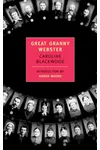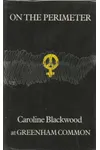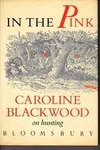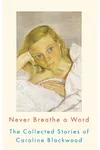Picture an Irish storyteller who spun tales of dark humor and twisted family ties, all while sipping from the cup of a Guinness heiress—meet Caroline Blackwood! Born into aristocratic chaos, she ditched high society for a pen, crafting novels and stories that sting with wit and wisdom. Despite a late start, her work continues to captivate with its sharp take on the human condition.
Caroline Blackwood’s life was as colorful as her prose. Married to painter Lucian Freud, composer Israel Citkowitz, and poet Robert Lowell, she was often cast as a muse, but her real genius shone in her writing. Let’s dive into the world of this literary rebel!
The Making of Caroline Blackwood
Born on July 16, 1931, in London’s posh Knightsbridge, Caroline Maureen Hamilton-Temple-Blackwood was the eldest child of the 4th Marquess of Dufferin and Ava and brewery heiress Maureen Guinness. Her childhood in Northern Ireland was wealthy but bleak, marked by neglectful nannies and a crumbling mansion. Scantily educated at schools like Rockport and Downham, she leaned into her sharp mind and rebellious spirit. By 18, she was a journalist in London, rubbing elbows with artists and intellectuals, her beauty and dark wit lighting up the room.
Her marriages to Freud, Citkowitz, and Lowell were turbulent, fueling both her life’s drama and her literary fire. It wasn’t until her 40s, after years of personal chaos, that Blackwood began writing in earnest, channeling her aristocratic angst into stories that cut like a well-aimed dart.
Caroline Blackwood’s Unforgettable Stories
Blackwood’s writing is a cocktail of gothic gloom, biting humor, and psychological depth. Her debut, For All That I Found There (1973), mixed short stories and nonfiction, including vivid memories of her Northern Irish roots. It set the stage for her unique voice—crisp, unflinching, and darkly funny.
Her masterpiece, Great Granny Webster (1977), a Booker Prize finalist, is a slim but savage tale of a monstrous matriarch whose cold grip ruins her family. Inspired by Blackwood’s own childhood, it’s both hilarious and haunting, like a gothic tea party gone wrong. The Stepdaughter (1976) delivers a claustrophobic look at a woman’s loathing for her obese stepchild, while The Fate of Mary Rose (1981) weaves a mystery around a village shaken by a child’s tragedy. The Last of the Duchess (1995), a nonfiction gem, chronicles Blackwood’s failed attempt to interview the aging Duchess of Windsor, exposing the absurdity of fame.
Her style—terse, elegant, and unapologetically cruel—digs into dysfunctional relationships, especially between women. Think Patricia Highsmith with an aristocratic edge. Blackwood’s work, though often out of print, remains a treasure for those who love their fiction with a side of venom.
Why Caroline Blackwood Matters
Caroline Blackwood’s legacy lies in her fearless exploration of human flaws. Her novels, short stories, and journalism tackled taboo topics—neglect, obsession, and societal decay—with a wit that made the darkness palatable. She gave voice to the messy, often ugly truths of aristocratic life, challenging the polished veneer of her upbringing. Her influence lingers in writers who embrace black comedy and psychological depth, from Shirley Jackson to Ottessa Moshfegh.
Despite her work being overshadowed by her high-profile marriages and struggles with alcoholism, Blackwood’s talent endures. Her stories, reissued by publishers like NYRB Classics, continue to find new readers who relish her sharp, subversive take on the world.
- Born: July 16, 1931, London, England
- Died: February 14, 1996, New York City
- Key Works: Great Granny Webster, The Stepdaughter, The Last of the Duchess
- Awards: Booker Prize finalist (1977) for Great Granny Webster
Snag Great Granny Webster and dive into Caroline Blackwood’s wickedly funny world—your bookshelf will thank you!









